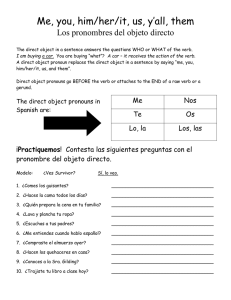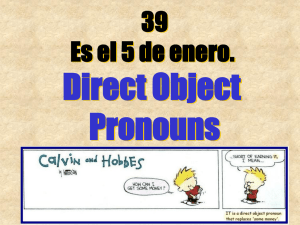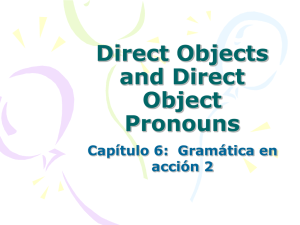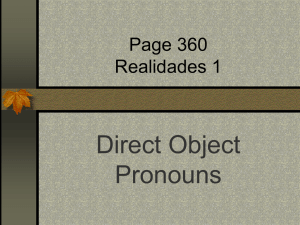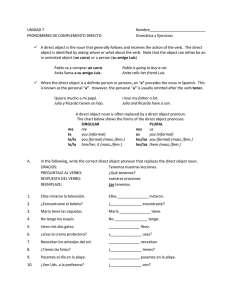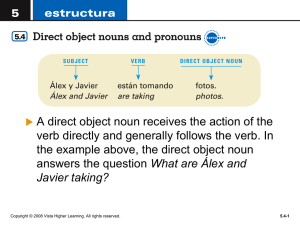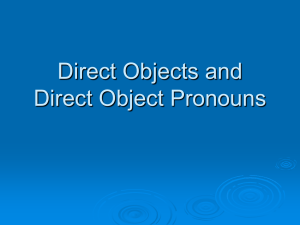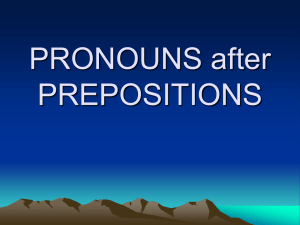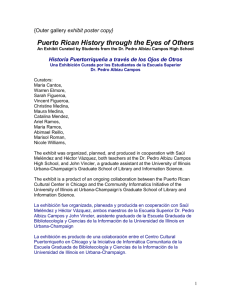Direct Object pronouns
advertisement
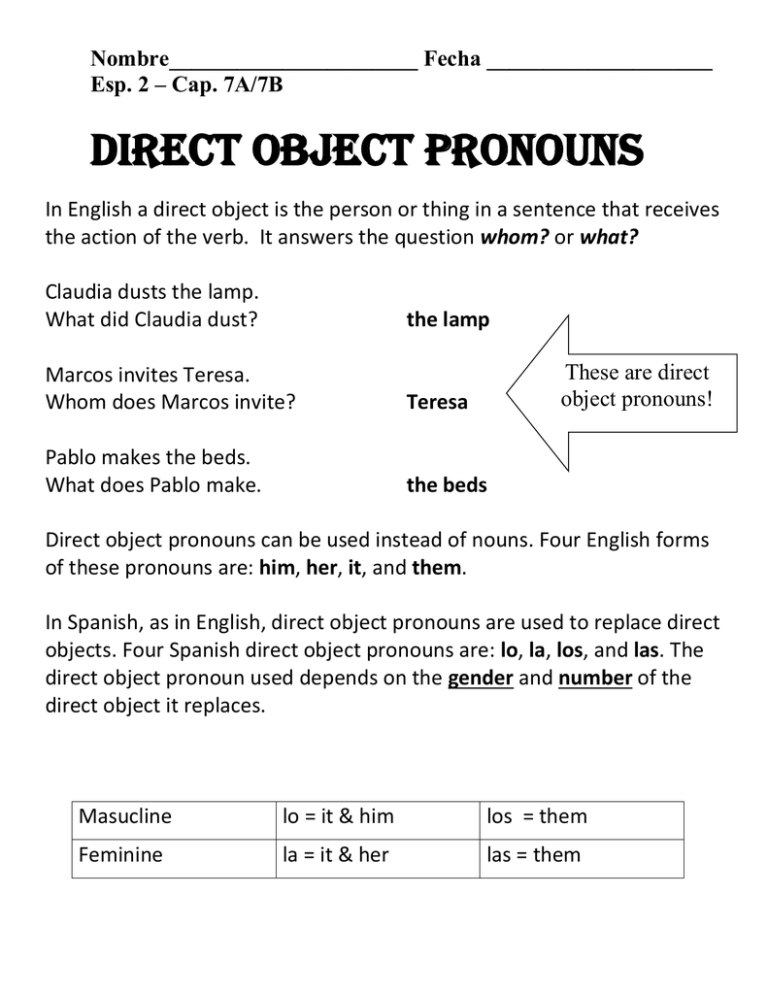
Nombre______________________ Fecha ____________________ Esp. 2 – Cap. 7A/7B Direct Object pronouns In English a direct object is the person or thing in a sentence that receives the action of the verb. It answers the question whom? or what? Claudia dusts the lamp. What did Claudia dust? the lamp These are direct object pronouns! Marcos invites Teresa. Whom does Marcos invite? Teresa Pablo makes the beds. What does Pablo make. the beds Direct object pronouns can be used instead of nouns. Four English forms of these pronouns are: him, her, it, and them. In Spanish, as in English, direct object pronouns are used to replace direct objects. Four Spanish direct object pronouns are: lo, la, los, and las. The direct object pronoun used depends on the gender and number of the direct object it replaces. Masucline lo = it & him los = them Feminine la = it & her las = them Placement of Direct Object Pronouns There are two way in which you can add a direct object pronoun in a sentence. The first way is ALWAYS used when there is only one verb in the sentence. Direct object pronouns come before a conjugated verb: ¿Quieres comprar el llavero? Before Sí, lo quiero comprar. or You can use this method if you have two verbs back-to-back, in a sentence. the direct object pronoun is attached to the infinitive. ¿Quieres comprar el llavero? Sí, quiero comprarlo. After Te toca a ti Circle the direct object noun and rewrite the sentence with a direct object pronoun. 1. Ayer Juanita compró las pulseras. __________________________________________ 2. Los novios miraron los anillos. _____________________________________________ 3. Necesito llevar mis botas. ________________________________________________ 4.¿ Quieres leer este libro? _________________________________________________ 5. ¿Puedo comer este pastel? _______________________________________________ 6. ¿Vas a comprar perritos calientes? _______________________________________________ 7. Quiero comprar el abrigo azul. _________________________________________________
